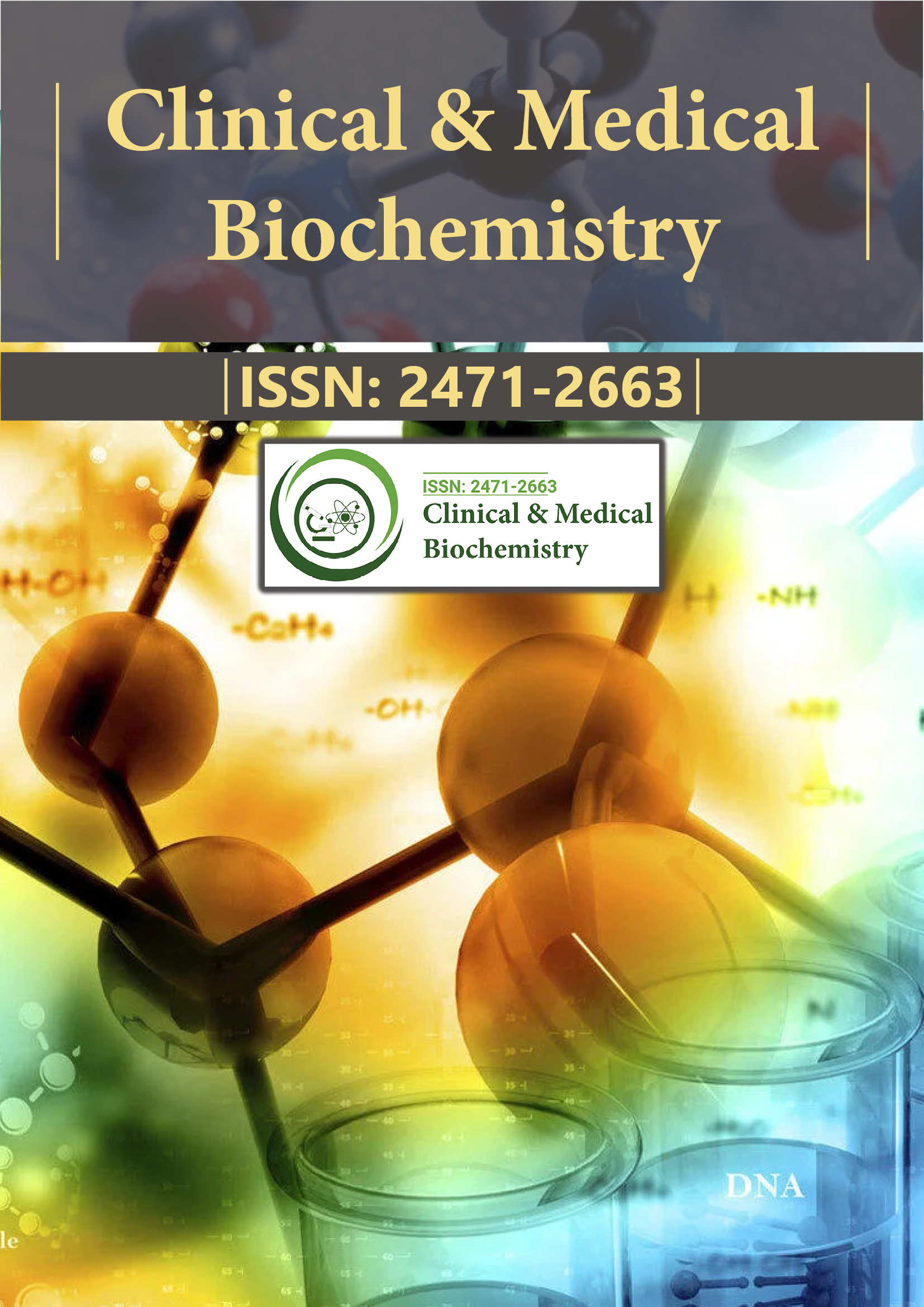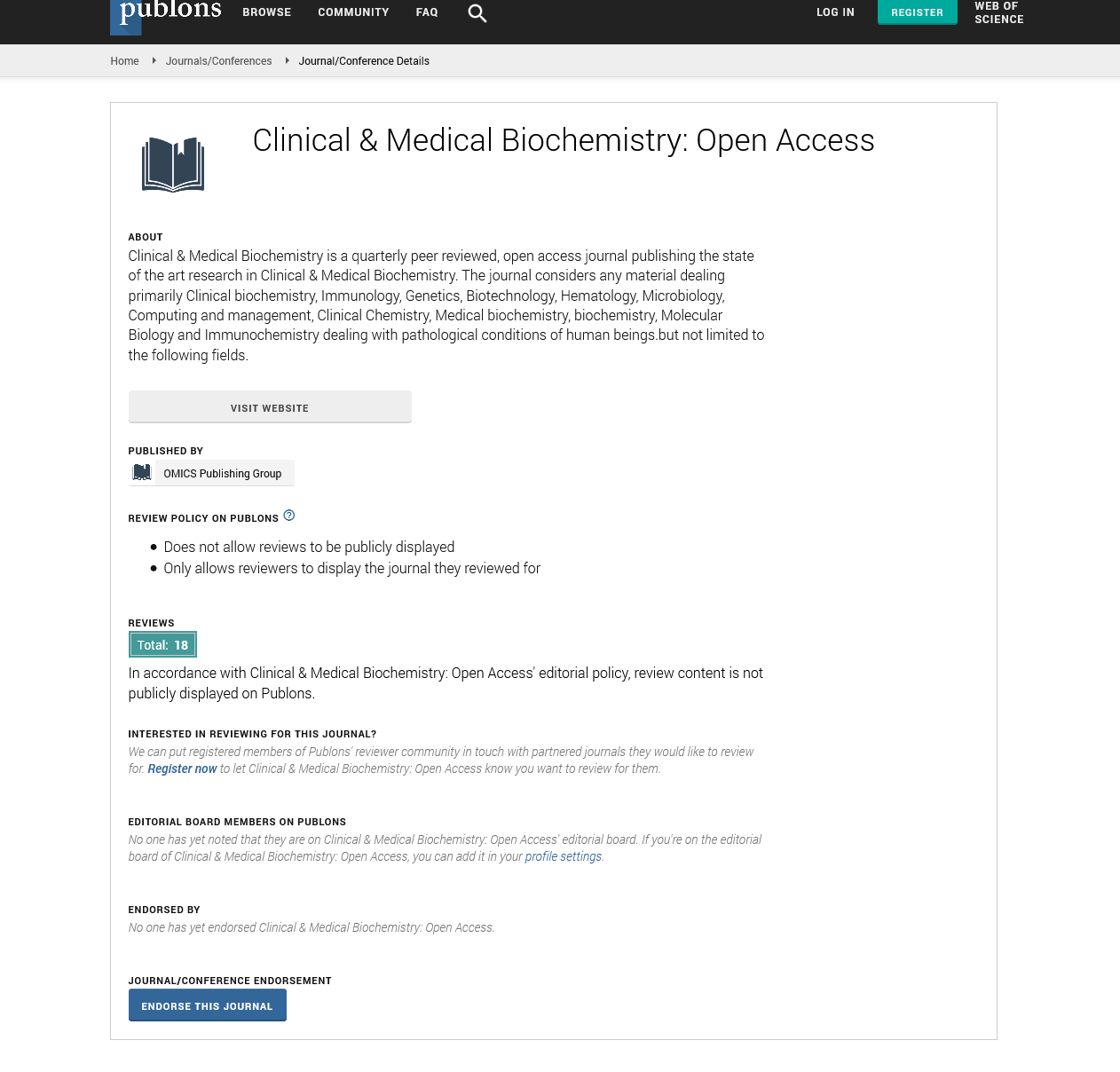Indexed In
- RefSeek
- Directory of Research Journal Indexing (DRJI)
- Hamdard University
- EBSCO A-Z
- OCLC- WorldCat
- Scholarsteer
- Publons
- Euro Pub
- Google Scholar
Useful Links
Share This Page
Journal Flyer

Open Access Journals
- Agri and Aquaculture
- Biochemistry
- Bioinformatics & Systems Biology
- Business & Management
- Chemistry
- Clinical Sciences
- Engineering
- Food & Nutrition
- General Science
- Genetics & Molecular Biology
- Immunology & Microbiology
- Medical Sciences
- Neuroscience & Psychology
- Nursing & Health Care
- Pharmaceutical Sciences
Commentary - (2022) Volume 8, Issue 1
Immunochemistry Basics of Polysaccharide Antigens and Immune Complexes
Christopher Wilson*Received: 04-Jan-2022, Manuscript No. CMBO-22-115; Editor assigned: 06-Jan-2022, Pre QC No. CMBO-22-115 (PQ); Reviewed: 20-Jan-2022, QC No. CMBO-22-115; Revised: 24-Jan-2022, Manuscript No. CMBO-22-115 (R); Published: 31-Jan-2022, DOI: 10.35248/2471-2663.22.8.115
Description
Immunochemistry is an excellent method for detecting the presence of these cytokines in the hypothalamus, pituitary gland, or other areas of the central nervous system, and when combined with measurement of release in vitro or in a push-pull cannula, cytokines you can decide if it is actually made and released. It’s not within, but at its starting point.
Immunochemistry of polysaccharide antigens
Lancefield’s first serological definition used hydrochloric acid and heat treatment to produce degraded low molecular weight antigens. Gentler technology has isolated high molecular weight or “natural” polysaccharides containing sialic acid. Human immunity correlates with antibodies to structures containing type III sialic acid. Using modern assays, rhamnose, d-galactose, 2-acetamido-2- deoxyglucose, and d-glucitol have been identified as constituent monosaccharides of the Group B antigen. It is composed of four different oligosaccharides, called I to IV, which are bound by phosphodiester bonds to form a complex and highly branched multi-antenna structure.
Types Ia, Ib, and III have repeating units of 5 sugars containing galactose, glucose, n-acetylglucosamine, and sialic acid in a 2: 1: 1: 1 ratio. Type II and Type V have 7 sugar repeat units, Type IV and Type VII have 6 sugar repeat units, and Type VIII polysaccharides have 4 sugar repeat units. Although the molar ratios vary, the monosaccharide content is the same among the polysaccharide types, but Type VI does not contain naacetylglucosamine and Type VIII contains rhamnose in its backbone structure.
Each antigen is a backbone repeating unit of two (Ia, Ib), three (III, IV, V, VII, VIII) or four (II) monosaccharides to which one or two side chains are bound. Sialic acid is the only terminal chain sugar, with the exception of type II polysaccharides, which also have terminal galactose. The structures of type Ia and type Ib polysaccharides differ only in the tertiary arrangement of the molecule, but only in the single side-chain linkage. These linkages are important for immunological specificity and explain the observed immunological cross-reactivity. Type III desialylated polysaccharides are immunologically identical to type 14 pneumoniae, and this observation reveals antibody recognition of conformation epitopes as an aspect of human immune determinant specificity and host immune response to type III GBS. Type III polysaccharides can also form elongated helices. The location of conformation epitopes along these helices is potentially important for binding site interactions.
Basic immunochemistry of immune complexes
The immunochemistry of immune complexes has been studied for decades. The classical precipitation curve shows the importance of the antigen/antibody ratio in determining the lattice formed by the immune complex in a typical antigen-antibody interaction. A curve with three common zones: an antibody-rich zone (prozone), an equivalent zone, and an antigen-rich zone (postzone) when an increasing amount of antigen is added to a certain amount of antibody. In some antigen-antibody systems, the prozone shows a large area without precipitation. Immune complexes formed in zones of high antigen or antibody excess is soluble. A large lattice immune complex that contains IgG and is formed in an antigen-to- antigen ratio near equivalent zones is complement because it has multiple IgG Fc regions that can be used to interact with the C1q complement protein.
The lattice structure of immune complexes can change as they interact with complement proteins. This is because covalently bound complement peptides sterically inhibit immune complex interactions and extensive lattice formation. Once immunoprecipitates are formed, they can be reduced in size, leading to solubilization of preformed immunoprecipitates through activation of alternative pathways of complement. Activation of the classical complement pathway can inhibit the growth of immune complexes by preventing extensive lattice formation. Therefore, in the presence of complement, the precipitin curve is better as a precipitate “surface” where either a higher concentration of complement component or an antigen or antibody excess results in a smaller immune complex or reduced immunoprecipitation. Therefore, complement activation acts as a negative regulator of immune complex lattice expansion.
Hypocomplementemic sera in patients with SLE cannot prevent the formation of immune precipitates compared to normal sera. This defective complement-dependent prophylaxis of immune precipitation is observed in early cases of SLE. Prevention of immune precipitation is positively correlated with C4A4 levels and inversely correlated with the presence of antibodies to C1q.
Citation: Wilson C (2022) Immunochemistry Basics of Polysaccharide Antigens and Immune Complexes. Clin Med Bio Chem. 8:115.
Copyright: © 2022 Wilson C. This is an open-access article distributed under the terms of the Creative Commons Attribution License, which permits unrestricted use, distribution, and reproduction in any medium, provided the original author and source are credited.

